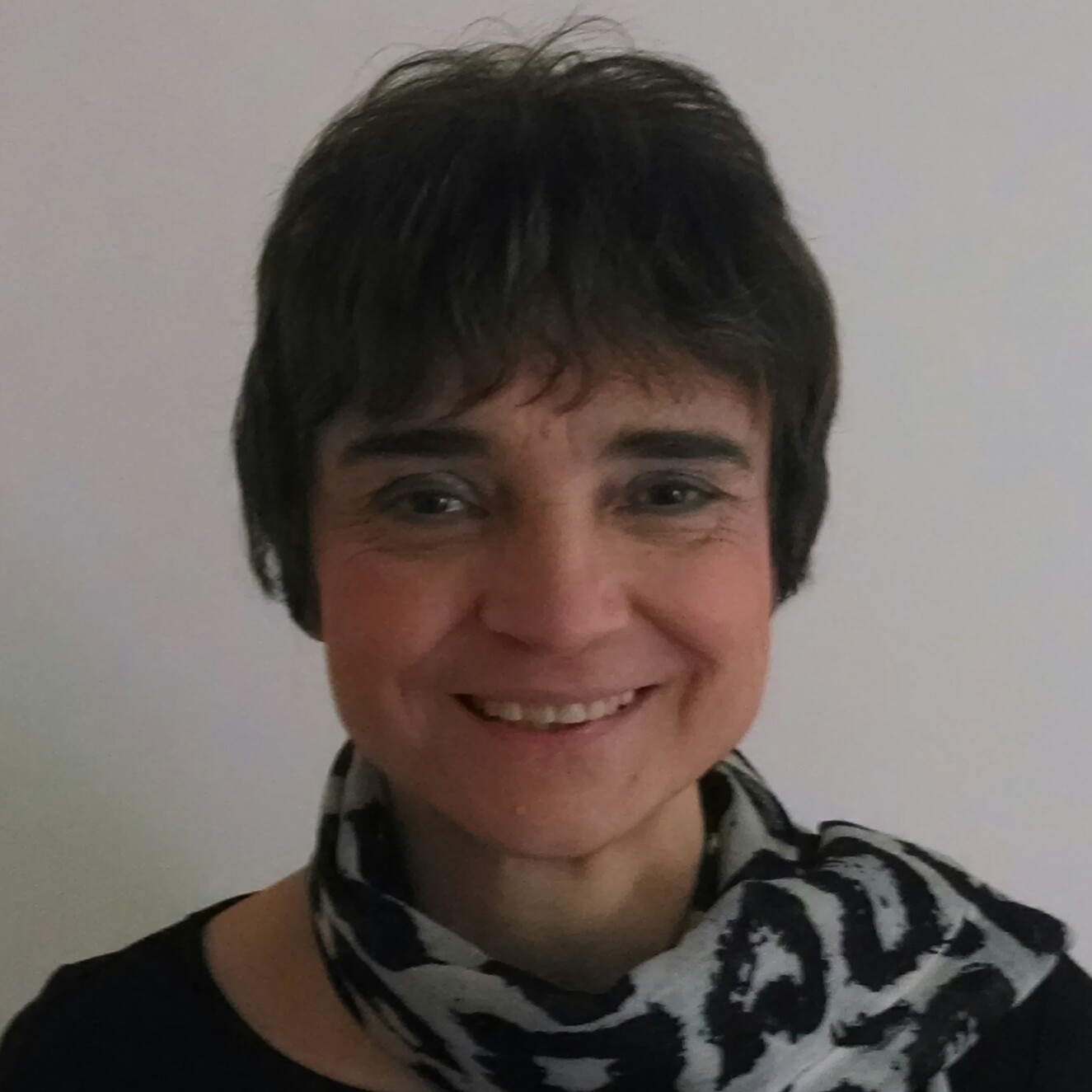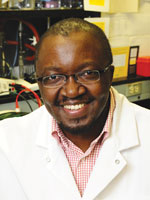Theme: Advanced Innovations in Anti-Cancer Drugs
Cancer Drugs 2021
Conference Series take pleasure to announce 7th International Conference on Anticancer Drugs & Therapies (Cancer Drugs 2024) has been scheduled on November 25-26, 2024 at Vancouver, Canada.
This conference includes several interactive sessions specifically designed for highly acclaimed educational activity which has been considered one of the predominant meetings on this subject. The objective of the Anticancer Drugs webinar is to reinforce Contemporary advances and innovations in cancer research and developments and the objectives are designed to introduce the audience to the advanced information on targeted immunotherapies, therapies, and emerging treatments in early development. The prime emphasis will be on clinical aspects of cancer treatment in the 21st century with analysis of significant scientific progress underlying the novel approaches still in preclinical development.
Who Should Attend?
Radiologists, Academicians, Oncologists, Chemotherapists, Physicians, Industry experts, Diagnostic research center experts, Academic researchers, Postgraduate understudies, Postdoctoral colleagues, and Trainees including:
• Hospital presidents/CEOs/COOs/VPs/trustees
• Hospital c-suite chiefs (tasks, advancement, money)
• Medical chiefs
• Oncology subject matter experts
• Oncology supervisors, program and practice chairmen, and administration line heads
• Healthcare advisors, merchants, and providers
• Pharmaceutical and biotechnology makers
Target Audience
- Cancer & Oncology Societies Professionals
- Bio-Medical Company professionals
- Medical Devices Companies
- Biotechnology Companies
- Academicians
- Oncologists
- Pathologists
- Corporate Cancer Research Professional
- Research Scholars
- Pharmacists
- Business Entrepreneurs
Why to Attend?
This conference will have discussions on methods and strategies related to management, quality improvement of Anti-Cancer Drugs as well as therapies to explore the new ideas and concepts on Prevention, Diagnosis, and Treatment of the Organ-related Cancers and its innovative techniques.
The benefits provided to the attendees are:
- Participation certificates will be provided to all speakers, delegates and students
- Opportunity to interact with the world’s renowned speakers at this event
- Keynote forums by Prominent Physicians & Professors
- Best platform for Global business and networking opportunities
- Oral/Poster presentations by Young Researchers
- Chair/Co-chair for the session of interest
- Best poster award for students
- Publishing abstracts in journals
|
Conference Name |
Venue |
Dates |
|
Vancouver, Canada |
November 25-26, 2024 |
Track 1: Cancer and its Relevance with other Diseases
A statistically highly increased risk of incident cancer was detected for the diseases and markers individually (except blood pressure and pulmonary disease). All eight diseases and markers were statistically remarkably correlated with risk of cancer death. Diabetes has been consistently perceptibly with a modestly increased risk of cancer. Accumulating evidence has also corresponding the risk of cancer with cardiovascular disease markers—for example, total cholesterol level, heart rate, blood pressure, chronic kidney disease, and gouty arthritis marker (uric acid). In addition, multiple studies have implicated pulmonary disease in lung cancer, but data on other cancer sites are lacking.
Track 2: Anti-Cancer Drug Discovery and Development
Evolution of drugs to selectively interfere with and slow down tumour growth has now entered a new and exciting era of the target orientated approach. Drugs are now being evolved against specific proteins included in cancer cell growth that have been uncovered over the last 10 years or so. The drug discovery operation is still a mixture of random screening and rational drug design. Relationships between academia and industry in drug discovery and development have continued to change over time as a result of technical and financial challenges and, most importantly, to the neutral of translating effective scientific discoveries into clinical opportunities.
Track 3: Advances in Cancer Research and Treatment
Cancer research is to identify causes and develop strategies for diagnosis, prevention, treatments and cure. Cancer research ranges from epidemiology, molecular bioscience to the performance of clinical trials to evaluate and compare applications of the various cancer treatment. These applications involve in surgery, chemotherapy, Immunotherapy radiation therapy, hormone therapy, and combined treatment modalities such as chemo-radiotherapy. Any cancer treatment can be used as a primary treatment, but the most common major cancer treatment for the most common types of cancer is surgery.
Track 4: Radiology & Imaging Technologies
Radiology’s role is intermediate to disease management, with a vast choice of tools and techniques accessible for the detection, staging and treatment. Numerous of these tests are unique in that they permit doctors to see inside the body. So many various imaging exams can be utilized to provide this view, including mammography, X-ray, CT scan, MRI, ultrasound, fluoroscopy, nuclear medicine, bone mineral PET scan and densitometry. Imaging technology is the point to the technical aspects of therapeutic procedures and diagnostic within radiology. Rather than focus on the practical features of imaging as seen in imaging in practice, imaging technology pertains to the technical aspect of the equipment and technology used.
Track 5: Cancer Biomarkers & Bioinformatics
Biomarkers have so many potential applications in cancer treatment, including differential diagnosis, risk assessment, determination of prognosis, screening, prediction of response to treatment, and monitoring of progression of disease. Because of the crucial role that biomarkers play at all stages of disease, it is significant that they went through rigorous evaluation, including assessment of clinical utility, analytical validation, clinical validation, and prior to incorporation into routine clinical care. Bioinformatics is the applications of analysis to the capture and interpretation of biological data and computation Bioinformatics is significant for management of data in modern biology and medicine
Track 6: Managing Cancer Care & Patient Support
Patient-centered cancer care indistinct on the needs, preferences, and inclusive experience of cancer patients, as explained by patients themselves and their families. Cancer organizations, mainly cancer centres, have been involved in patient satisfaction reporting and tracking of global ratings of care for years. However, fewer cancer organizations have focused quantification on the broader construct of patient experience that involves other attributes of the healthcare encounter contemplate valuable to patients. The preference of IT in supporting and improving patient-centered cancer care delivery is compelling in theory, and evidence of tangible progress is increased.
Track 7: Cancer Causes & Risk Factors
Cancer can modify into a variety of different ways, due to these various factors some we inherit, and others we are exposed to throughout our lives. It can be differentiated into hundreds of various diseases based on the cells in which it arises. Increasing in the age is a risk factor for developing cancer. Cancer risk factors include modifiable risks, such as obesity alcohol, smoking, and sun exposure as well as other risks such as family history. Cancer develops when cells acquire the capability to develop uncontrollably and ultimately invade and destroy the body’s normal tissues.
Track 8: DNA Damage and Mutation
DNA damage occurred by endogenous and exogenous factors, analyzes the possible talk over of every type of damage and discusses the need for different types of DNA repair. When DNA repair machinery is not working effectively, the generation of DNA lesions and mutations leads to carcinogenic transformation. A low DNA repair potential was assign to raise cancer risk and the genes staying behind it are known as “low penetration genes.” The mutations in a cancer cell genome may encompass several distinct classes of DNA sequence change. Mutations in a cancer cell genome have been acquired during the segment of the cell lineage in which predecessors of the cancer cell already show phenotypic evidence of neoplastic change
Track 9: Cancer Prevention Vaccines
Vaccines for various cancers, with the highest number being designed for breast, melanoma, and colon cancer, were rapidly brought to the clinic after fortunate preclinical studies in mouse models.These vaccines only effective if they are given to someone before they are exposed to the virus. There are two types of cancer prevention vaccines that have been approved by the U.S. Centers for Disease Control and Prevention and U.S. Food and Drug Administration (FDA) and suggested by the Currently are Preventive vaccines can protect you from viruses or oncoviruses, that are strongly involved with cancer, while therapeutic vaccines attack cancer cells.
Track 10: Cancer Immunology & Immunotherapy
Cancer immunology is the research of interconnection between the cancer cells and immune system, which is a frequent developing field of research that focus to recognize immunodiagnosis, biomarkers in cancer and to develop innovative cancer immunotherapeutic strategies. Cancer immunotherapy is utilized to treat cancer patients that includes or uses components of the immune system. Some cancer immunotherapies contain antibodies that bind to, and suppress the function of proteins shown by cancer cells. Other cancer immunotherapies involves T cell infusions andVaccines.
Track 11: Clinical and Medical Case Reports
Case reports are characterized as the logical documentation of a solitary clinical perception and have a long-established and rich custom in medication and logical distribution. Case reports are significant assets of surprising data that may develop new research and advances in clinical practice and clinical. Case reports has the ability to report novel findings and develop therapeutic strategies. The priority of case series or case reports is not confined to identification of drug side effects or new diseases. Case reports can barely prove causation but create a new hypothesis and may tend to develop further research.
Track 12: Cancer Pathology & Genetics
Cancer is a disease engage in abnormal cell growth with the capability to invade or spread to other parts of the body. All tumors are not cancerous, benign tumors do not spread to other parts of the body. Neoplasm is an abnormal growth of tissue, which if it forms a mass and lumps, is mainly referred as a tumor. Mutations in genes involved in cellular signaling are general, and often shared by tumors that arise in distinct anatomical locations. Rapid technical developments molecular analysis tools and DNA sequencing other are driving the discovery of somatic mutations engaged in the development and growth of cancer.
Track 13: Surgical & Clinical Oncology
Medical Oncology examines the professional assessment and conduct of patients with cancer. Medical oncology progressed because of the establishment of various new cancer therapies and an awareness of the need of patients with cancer for eternal care, from diagnosis to the end-of-life phase. Medical Oncology is a modality of treatment in cancer care which utilizes Immunotherapy, Hormonal Therapy, Chemotherapy, and Targeted Therapy to treat cancer in an effective way. Medical Oncology is normally works in interconnection with Radiation Oncology or Surgical Oncology to give the best clinical outcomes. Clinical oncology involves in radiotherapy and systemic therapies.
Track 14: Cancer Nanotechnology
Nanotechnology supply high specificity, sensitivity, and multiplexed measurement capacity has therefore been look into detection of extracellular cancer cells, cancer biomarkers and as well as for in vivo imaging. Nanotechnology has not yet been establish clinically for cancer diagnosis, it is already on the market in a different screens and medical tests , such as gold nanoparticles in home pregnancy tests .For cancer diagnosis, nanoparticles are being applied to seize cancer biomarkers, such as circulating tumor DNA, circulating tumor cells, exosomes and cancer-associated proteins.
Track 15: Cancer Epidemiology
Cancer epidemiology is the study of the determinants, distribution, and frequency of malignant disease in particular persons. Epidemiologic assessment examines the clinician with a measurement of cancer risk, outlines the basis for screening modalities for high-risk populations, and determines the effectiveness of any preventive intervention. Cancer risk factors involve genetic susceptibility, immunosuppressive state and environmental exposures but may be secondary to prior history of viral infection, therapy or malignancy.
Track 16: Cancer Pharmacology
Cancer Pharmacology associated in pharmacology relevant to the treatment of malignant disease, including: practical and theoretical aspects of pharmacokinetics and pharmacodynamics, novel cancer therapies utilizing small molecules, the general concepts of the basic clinical and molecular pharmacology of the major classes of anti-cancer agents, cancer chemotherapy and involves in the general mechanisms of DNA damage tolerance design, DNA repair and discovery of new drugs. Processing of proto-oncogenes, the regulation of tyrosine kinases, and their effectors, cell-cycle-specific kinases, regulation of small GTPases, and DNA repair gene products are being determined as potential targets or to improve the efficacy of existing chemotherapeutic agents.
Track 18: MicroRNA and Cancer
MicroRNAs (miRNAs) are short non-coding RNAs of 20–24 nucleotides that plays vital role in virtually mammals and all biological pathways. Involvement of microRNAs in cancer, which have evolved from the study of animal model systems and cell culture. It involves in the regulation of key cancer-related pathways, such as DNA damage response, cell cycle control and the microRNA molecules are already entering into the clinic as prognostic biomarkers and diagnostic for patient stratification and also as agents and therapeutic targets.
Track 19: Regenerative Medicines
Regenerative medicine is a field that involves in engineering and life science principles to enhance regeneration. Regenerative medicine has the potential to cure several clinical conditions in both acute injuries and chronic diseases or replace tissues and organs damaged by disease, age, trauma or as well as to neutral congenital defects. Regenerative medicine encompasses so many strategies, including the use of de novo generated cells, materials and as well as different combinations thereof, to replace of missing tissue, effectively replacing it both functionally and structurally contribute to tissue healing.
Track 20: Robotic Oncology
In general, robotic systems contain three parts: a vision cart, the surgeon’s console and surgical cart. Robotic surgery were used in benign disease, such as Lindbergh cholecystectomy and coronary artery surgery, it was not long before robotics became vastly adopted in surgical oncology. Surgical robots, such as ZEUS , AESOP , da Vinci and provide surgeons with technologically advanced vision and hand techniques, which have evolutionary surgery in different fields. Few of the euphoria with robotics is interconnected to the surgical benefits it offers over traditional surgical methods. integration ,Stability with modern imaging tools, accuracy, and high range of maneuverability
Track 21: Pediatric Oncology
Pediatric Oncology is normally just interconnected to the supportive care aspect during the management of the underlying malignancy. The causes of most childhood cancers are not known. About 5 % of all cancers in children are caused due to inherited mutation (a genetic mutation that can be passed from parents to their children. Several cancers in children, like those in adults are develop, as a result of mutations in genes that remains in uncontrolled cell growth and eventually leads to cancer. In adults, these gene mutations shows and long-term exposure to cancer-causing substances and cumulative effects of aging.
Market Analysis:
Global market is segmented into East and Africa Europe, Latin America, Asia pacific, North America, and Middle. In line with market study, market price for medicine is going to be quite double to $623 Million by 2021. The global cancer profiling market size is expected to grow USD 13.9 billion by 2025 , at a CAGR of 10.9% during the forecast period. The prominent experts in this market are QIAGEN N.V. (Germany), NeoGenomics Laboratories, Illumina, Inc. (US), Inc. (US), HTG Molecular Diagnostics, Inc. (US), NanoString Technologies, Genomic Health Inc. (US), Caris Life Sciences (US), Helomics Inc. (US), Sysmex Corporation (Japan), Roche Diagnostics (Switzerland) Corporation (US), . Acrucial part of analysis goes on the highest Universities on across the world . Yearly worldwide progress in the oncology drug market is extended to be 7.5–10.5 percent by 2021, hitting $150 billion, as indicated by statistical surveying.
Several major pharmaceutical companies, like Pfizer and Eli lily, have also initiated these programs to assist uninsured patients who are affected by chronic diseases. Thus, an outsized number of uninsured patients, affected by cancer, also can undergo cancer therapies, which is probably going to reinforce the expansion of the market.
Conference Highlights
- Cancer and its Relevance with other Diseases
- Anti-Cancer Drug Discovery and Development
- Advances in Cancer Research and Treatment
- Radiology & Imaging Technologies
- Cancer Biomarkers & Bioinformatics
- Managing Cancer Care & Patient Support
- Cancer Causes & Risk Factors
- DNA Damage and Mutation
- Cancer Prevention Vaccines
- Cancer Immunology & Immunotherapy
- Clinical and Medical Case Reports
- Cancer Pathology & Genetics
- Surgical & Clinical Oncology
- Cancer Nanotechnology
- Cancer Epidemiology
- Cancer Pharmacology
- MicroRNA and Cancer
- Regenerative Medicines
- Robotic Oncology
- Pediatric Oncology
To share your views and research, please click here to register for the Conference.
To Collaborate Scientific Professionals around the World
| Conference Date | December 05-06, 2021 | ||
| Sponsors & Exhibitors |
|
||
| Speaker Opportunity Closed | |||
| Poster Opportunity Closed | Click Here to View | ||
Useful Links
Special Issues
All accepted abstracts will be published in respective Our International Journals.
Abstracts will be provided with Digital Object Identifier by









































